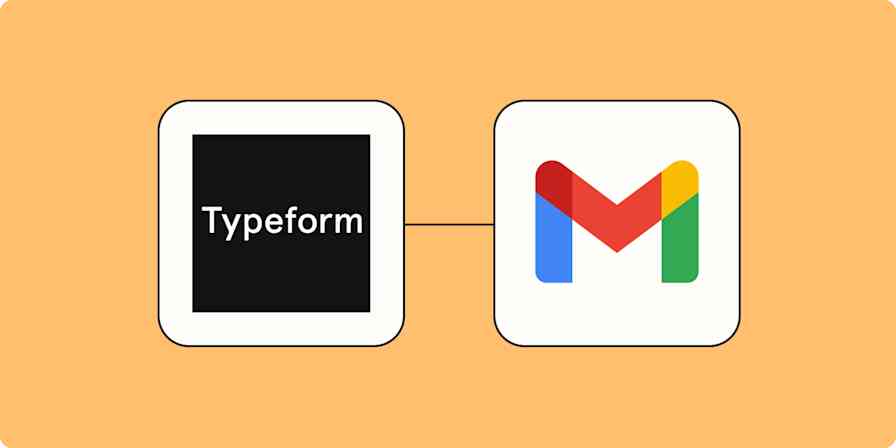If you're a loyal Jotform user, you know its robust features make it the ideal tool for collecting customer info like feedback, registrations, or survey responses.
But if you regularly need to share that priceless customer data with other teams and tools, you know how slow—and error-prone—it can be to copy and paste between different apps.
In this quick tutorial, we'll show you how to set up a Zap that automatically saves new JotForm responses as rows in a Google Sheet. Easily build a data-collecting process that scales with your business.
New to Zapier? It's workflow automation software that lets you focus on what matters. Combine user interfaces, data tables, and logic with 6,000+ apps to build and automate anything you can imagine. Sign up for free.
Before you begin
For your Zap to work correctly, you need to have a header row in the Google Sheet where you'll collect your Jotform responses. Create a Google Sheet and add column titles for each answer you want to collect. Here's what ours looks like:
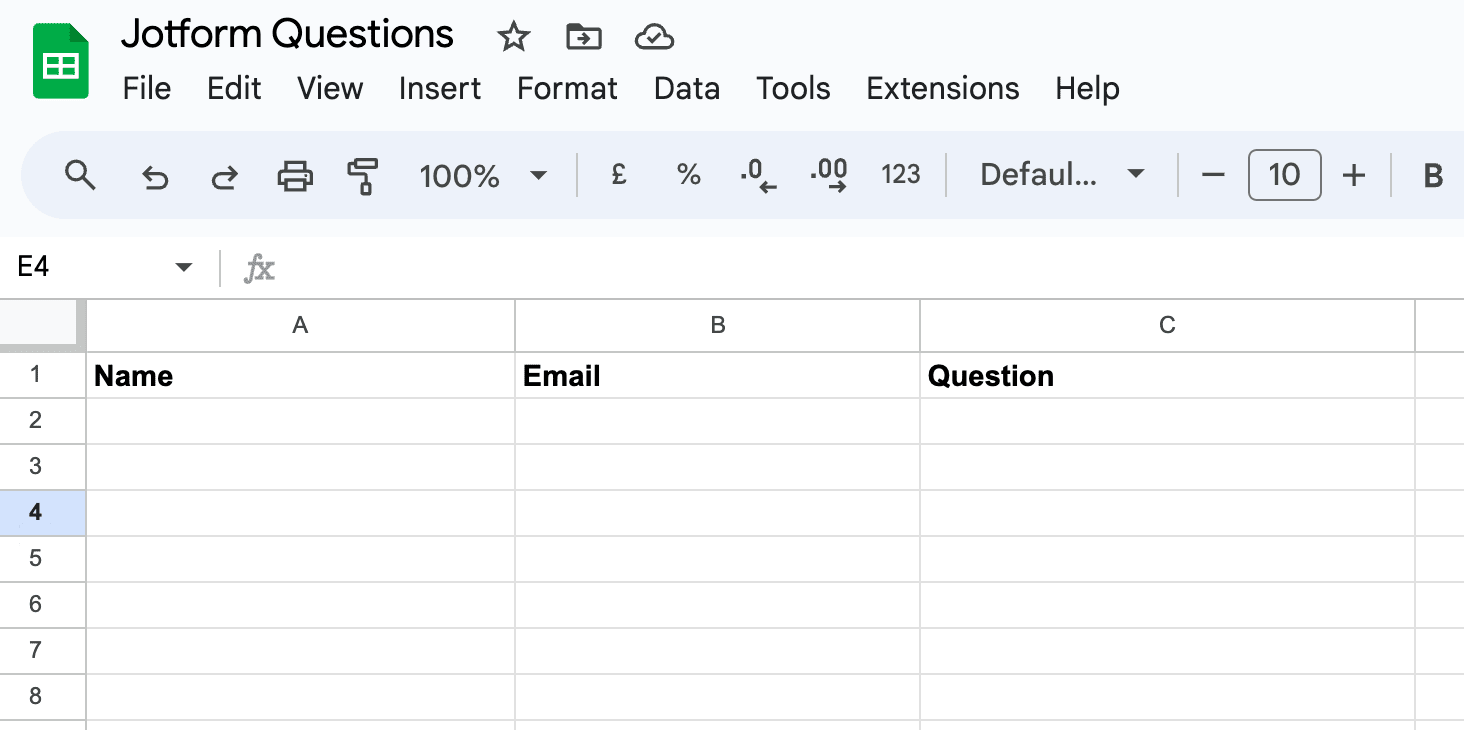
How to save new Jotform responses as Google Sheets rows
Zapier lets you create automated workflows called Zaps, which send your information from one app to another. You can create your own Zap from scratch without any coding knowledge, but we also offer quick templates to get you started.
If you'd like to start with a template, click on it below, and you'll be taken to the Zapier editor. You'll need to create a Zapier account if you don't already have one. Then, follow the directions to set up your Zap.
Set up your Jotform trigger
Let's start with the trigger—the event that starts your Zap. If you're using the Zap template, this will be selected for you. Otherwise, search for and select Jotform as the trigger app and New Submission as the trigger event, then click Continue.
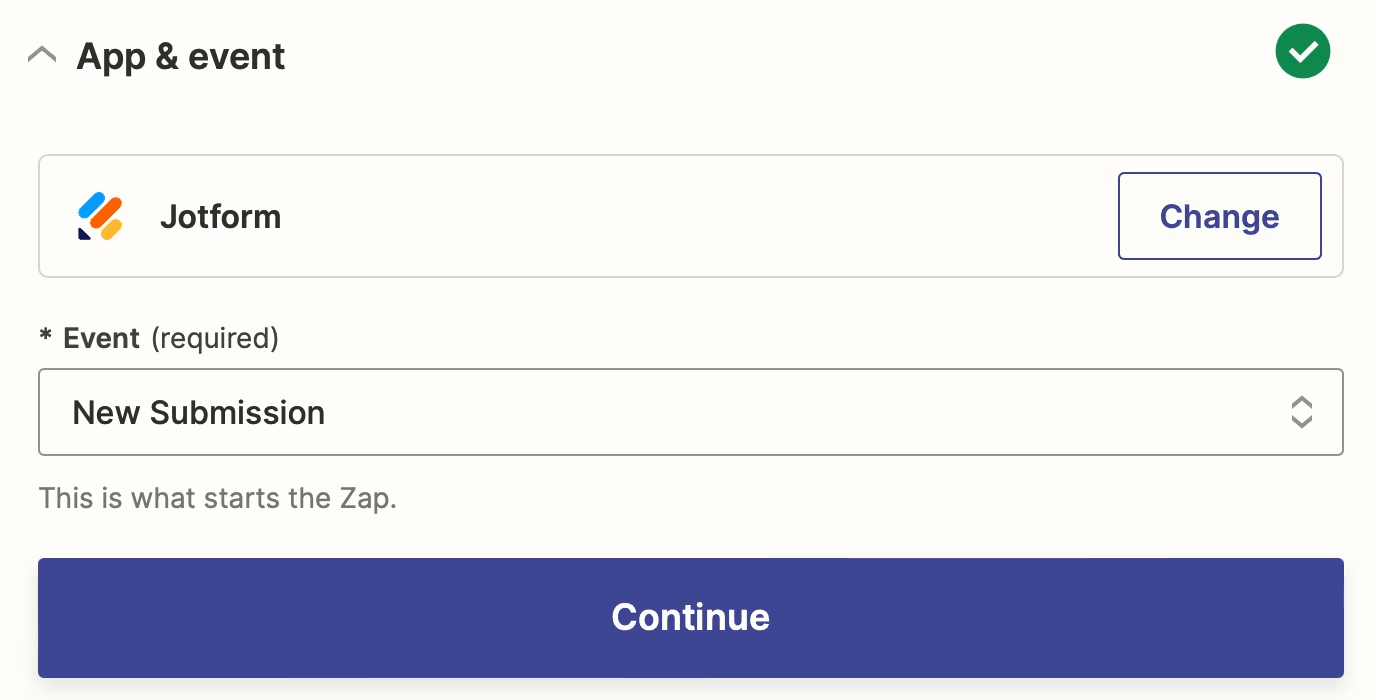
Next, connect your Jotform account. If you're doing this for the first time, click Sign in. This will open up a new page where you can tell Zapier if you're using a HIPAA-compliant account or if your servers are based in the European region. Both are optional.
Click Yes, Continue, then click Allow to allow Zapier access to your Jotform account.
Back in the Zap editor, click Continue.
Now that your account is connected, it's time to set up the trigger. In the Form field, choose the form where you're collecting your leads data.
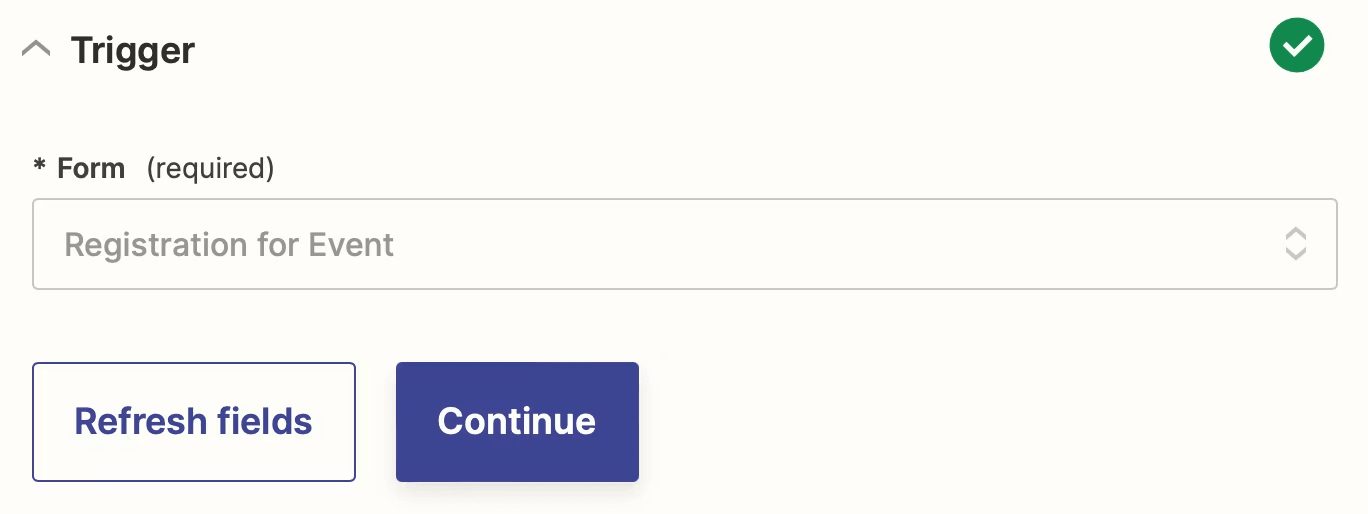
Now, it's time to test your trigger. To set up the rest of your Zap correctly, you'll need at least one response to your Jotform. If you don't have any submissions yet, submit a test one now.
Once you have at least one response, click Test trigger. Zapier will show you the three most recent submissions to your form. Choose a sample record, then click Continue with selected record.
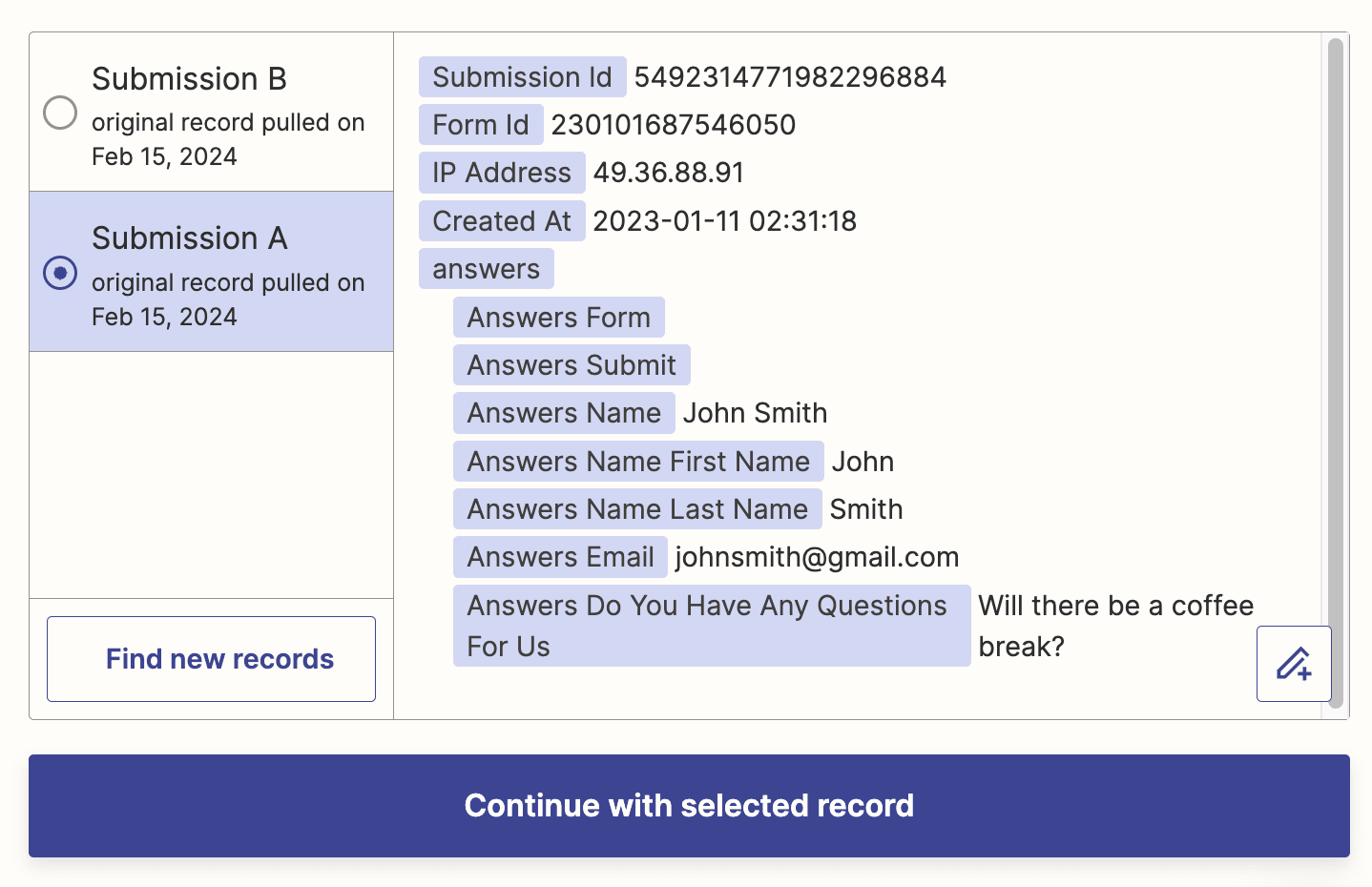
Set up your Google Sheets action
Now, it's time to set up the action—the event your Zap will perform once it's triggered. If you're using the Zap template, these will already be selected for you. Otherwise, search for and select Google Sheets as your action app and Add Row as your action event. Click Continue.
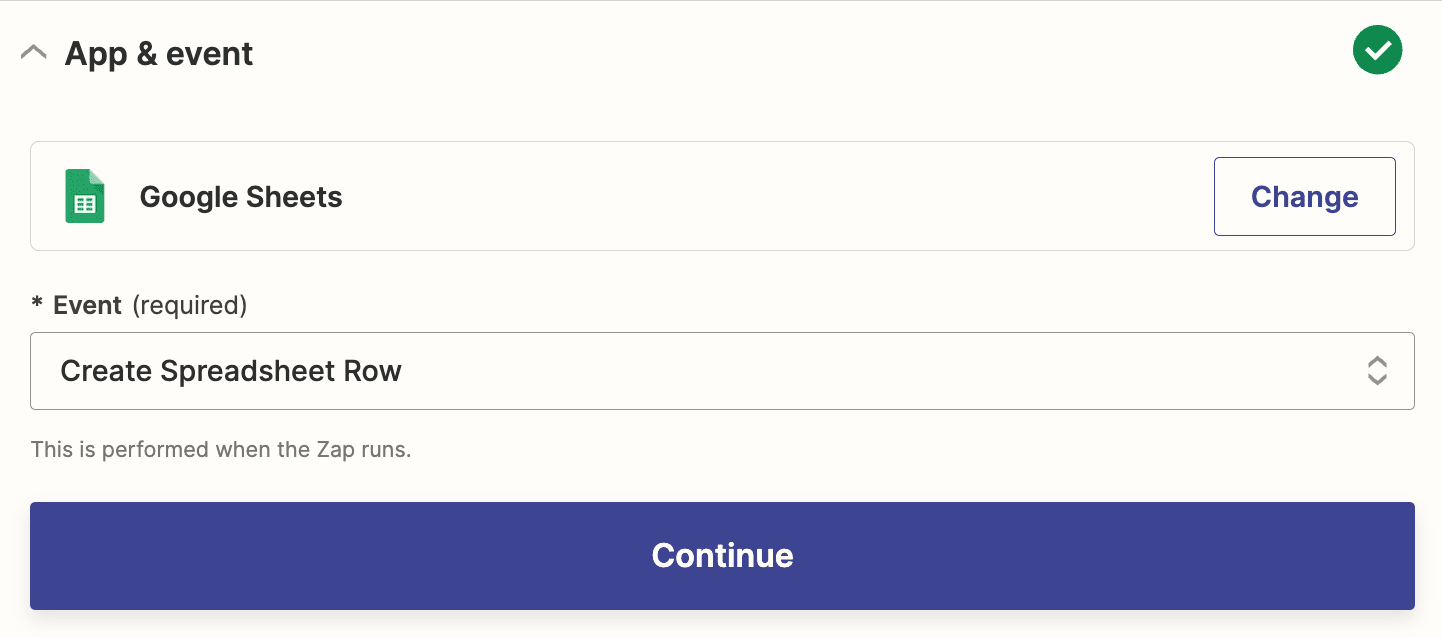
Connect your Google Sheets account, if you haven't already, then click Continue.
Now, it's time to customize your action step. First, select the drive where your Google Sheet is stored in the Drive field. Then, select the spreadsheet you created in the Spreadsheet field. And finally, choose the appropriate worksheet (by default, it's "Sheet1").
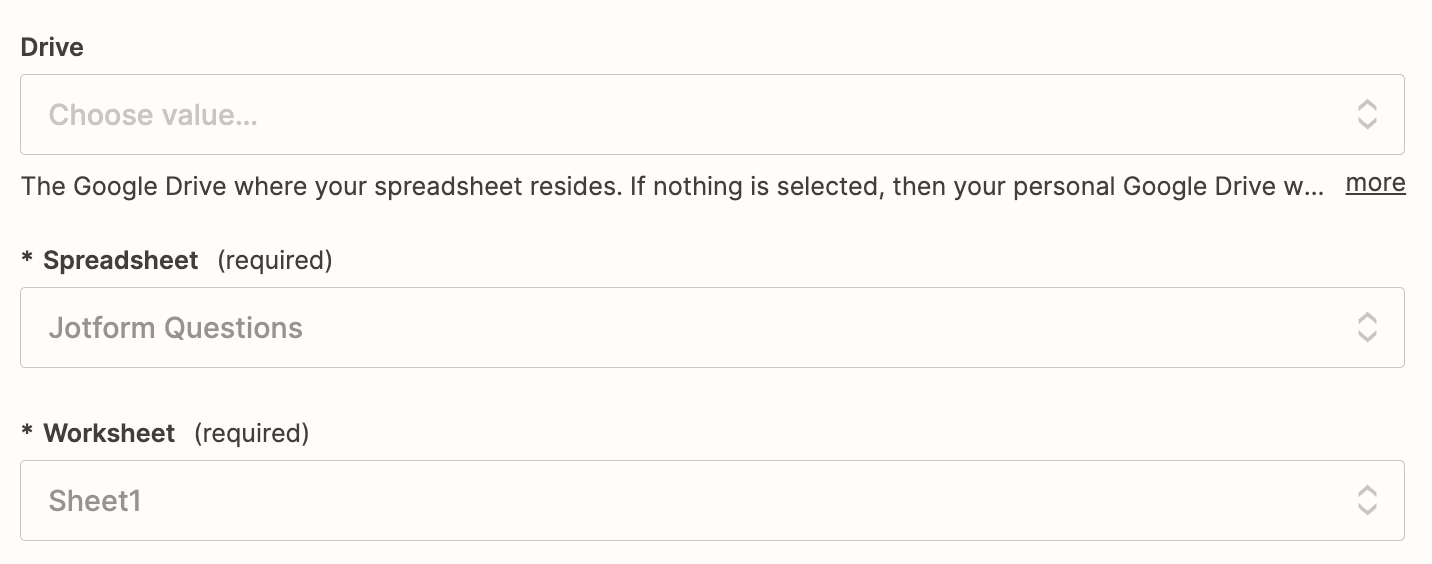
Now, it's time to add your Jotform responses to your Google Sheets rows—what we call mapping your data. Click in any field where you'd like to add a Jotform response, then select the appropriate data from the Insert Data dropdown. For example, we'll select Answers Name in the Name field, Answers Email in the Email field, etc.
Once you've mapped all of your fields, click Continue.
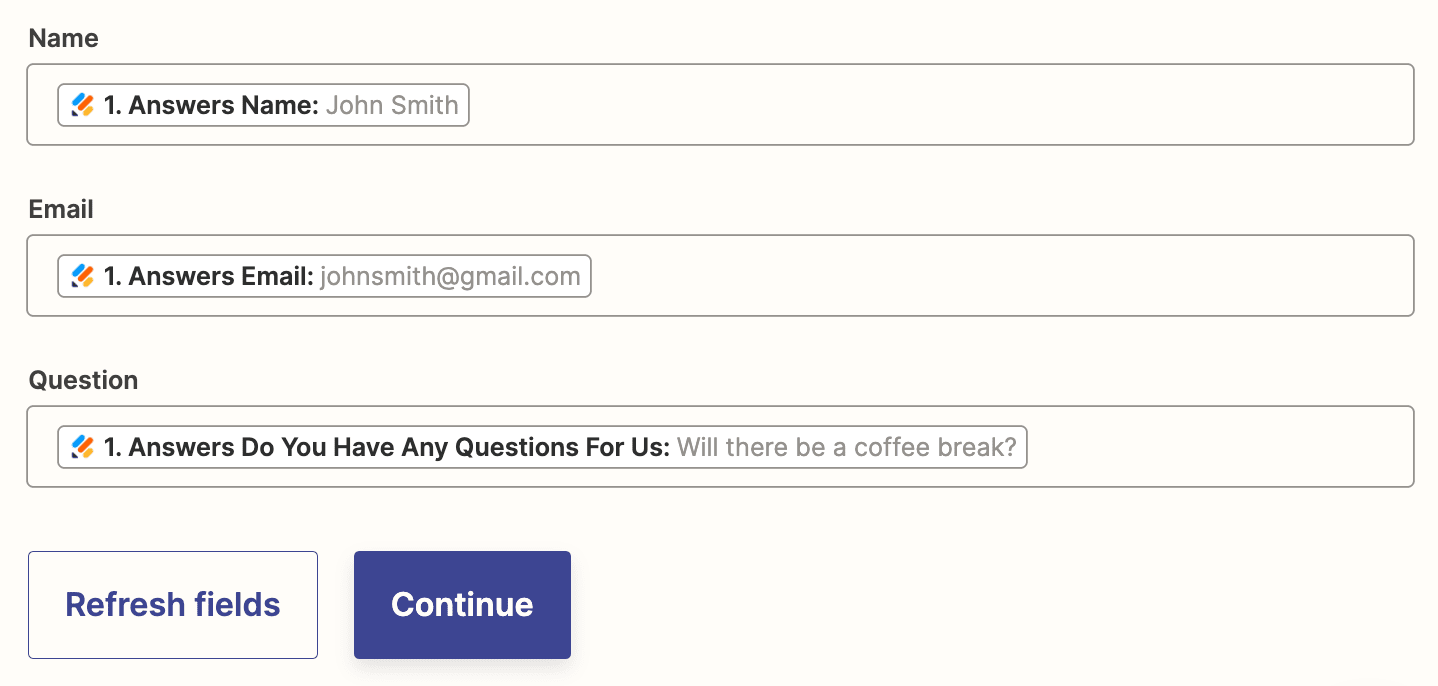
Now, it's time to test your Zap to make sure everything is set up correctly. Click Test step, and Zapier will send a Jotform response to your Google Sheet, just how you've set it up.
To make sure everything went well, open the Google Sheets spreadsheet to see for yourself. Here's what our sample data looked like:
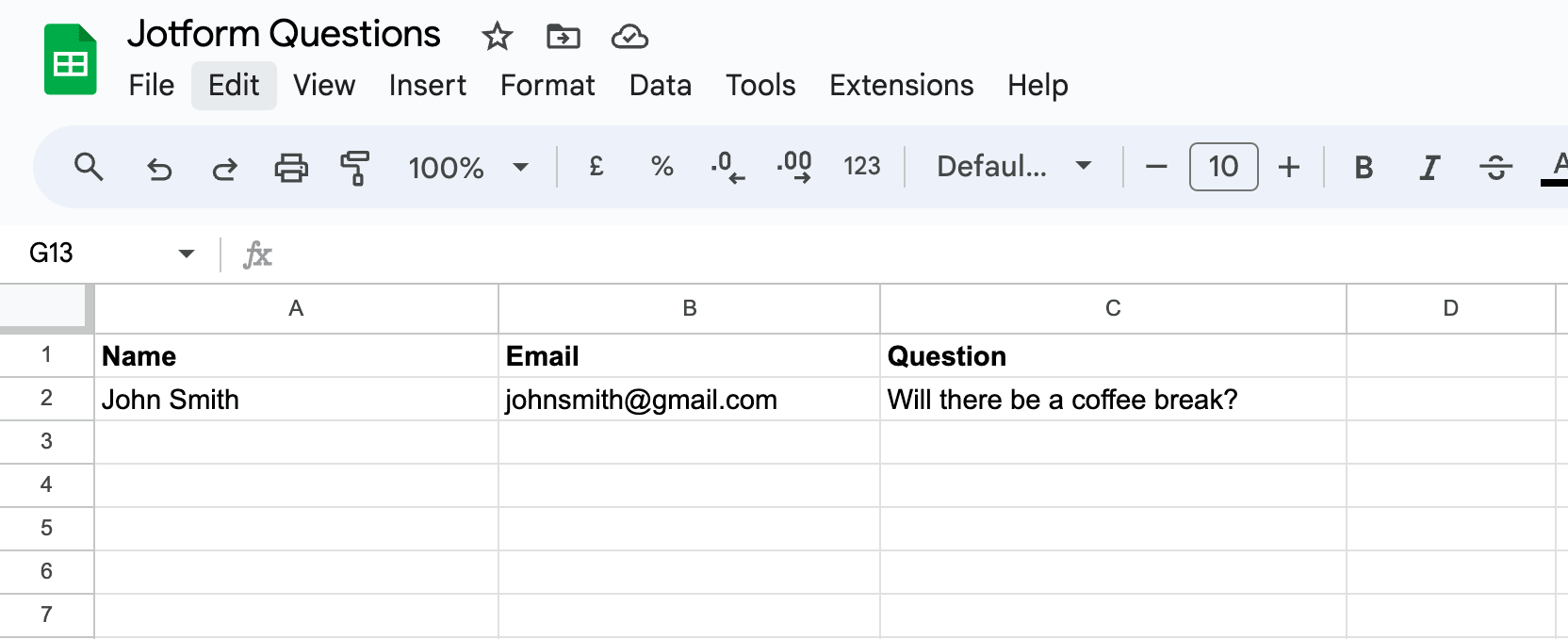
If everything looks good, you're now ready to use your Zap. Now, every Jotform submission will automatically show up in your Google Sheets spreadsheet, just like that!

